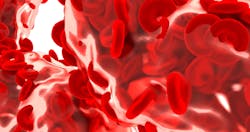By Drew Case, AABB Communications Staff
Serosurveillance data from the RESPONSE (REDS-IV-P Epidemiology, Surveillance and Preparedness of the Novel SARS-CoV-2 Epidemic) study demonstrated how SARS-CoV-2 spread in six American metropolitan areas, according to study results presented at the AABB Virtual Annual Meeting and summarized on the association’s blog. In her in Late-Breaking Oral Abstract presentation, Mars Stone, PhD, senior scientist at Blood Systems Research Institute and director of the Viral Reference Laboratory and Repository Core, shared how the data helps public health officials quantify asymptomatic and resolved cases of COVID-19 to track infection incidence.
The REDS-IV-P Center for Transfusion Laboratory Studies (Vitalant Research Institute, VRI) led the project, which represents a collaboration between REDS-IV-P investigators and four blood collectors: Bloodworks Northwest, New York Blood Center, Vitalant and the American Red Cross.
Between March and July, investigators conducted monthly cross-sectional serosurveys of 1,000 routinely obtained donor samples in New York City, San Francisco, Seattle, Los Angeles, Minneapolis and Boston (excluding COVID-19 convalescent plasma donors).
In March, seroreactivity was less than 1.0 percent (range 0.1-0.9 percent). Donor seroreactivity in New York City peaked in May (12.5 percent) and was much higher than in other locations. Stone shared that this is consistent clinical case reporting in metropolitan New York City. There were modest increases in seroreactivity over the study timeframe for all other sites.
Stone shared that approach will be used in a significantly expanded CDC National serosurveillance study involving all 55 additional metropolitan areas, selected for geographic and demographic diversity. The study will test 2,000-6,000 donation each month for one year through partnerships with 17 different blood collection organizations.

